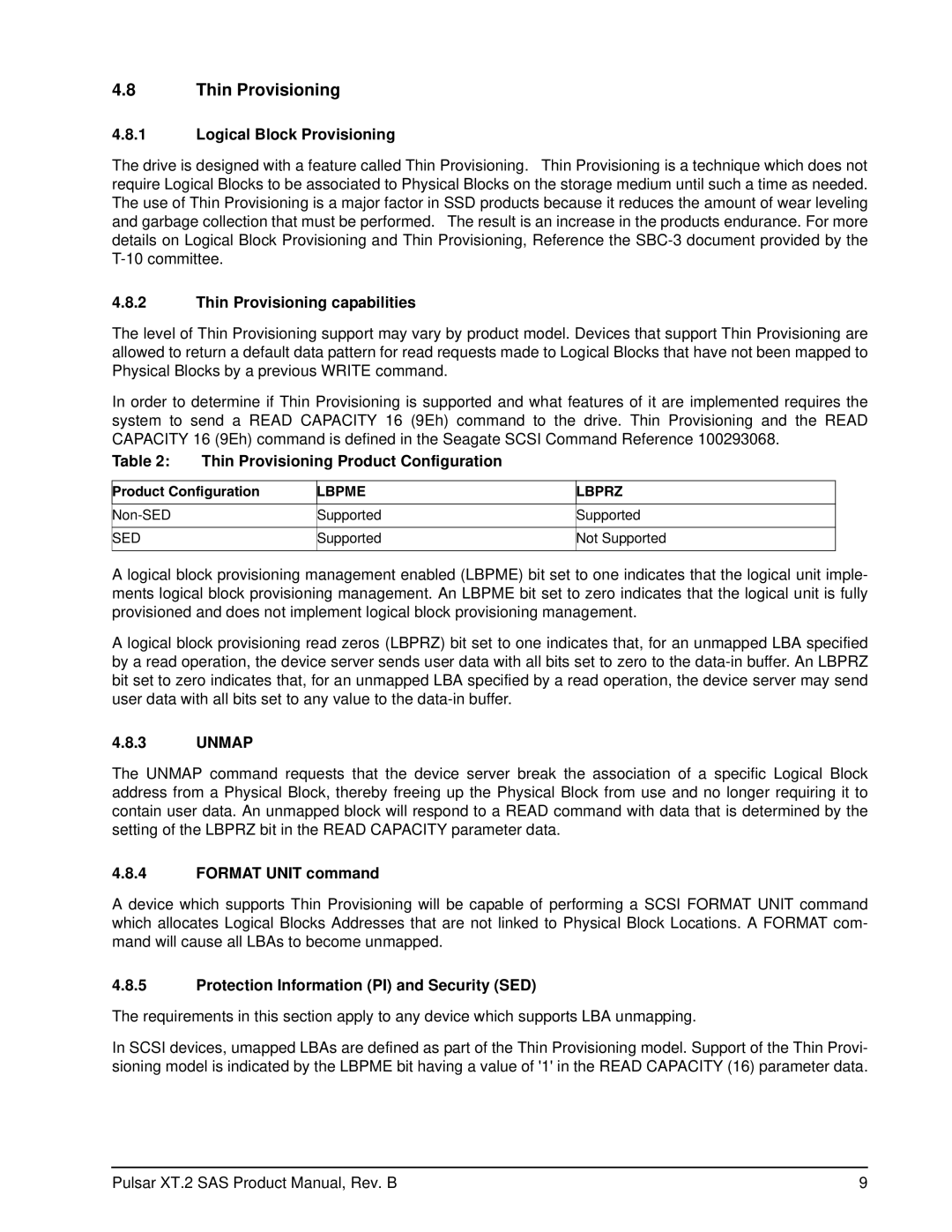
4.8Thin Provisioning
4.8.1Logical Block Provisioning
The drive is designed with a feature called Thin Provisioning. Thin Provisioning is a technique which does not require Logical Blocks to be associated to Physical Blocks on the storage medium until such a time as needed. The use of Thin Provisioning is a major factor in SSD products because it reduces the amount of wear leveling and garbage collection that must be performed. The result is an increase in the products endurance. For more details on Logical Block Provisioning and Thin Provisioning, Reference the
4.8.2Thin Provisioning capabilities
The level of Thin Provisioning support may vary by product model. Devices that support Thin Provisioning are allowed to return a default data pattern for read requests made to Logical Blocks that have not been mapped to Physical Blocks by a previous WRITE command.
In order to determine if Thin Provisioning is supported and what features of it are implemented requires the system to send a READ CAPACITY 16 (9Eh) command to the drive. Thin Provisioning and the READ CAPACITY 16 (9Eh) command is defined in the Seagate SCSI Command Reference 100293068.
Table 2: Thin Provisioning Product Configuration
Product Configuration
LBPME | LBPRZ |
SED
Supported | Supported |
Supported | Not Supported |
|
|
A logical block provisioning management enabled (LBPME) bit set to one indicates that the logical unit imple- ments logical block provisioning management. An LBPME bit set to zero indicates that the logical unit is fully provisioned and does not implement logical block provisioning management.
A logical block provisioning read zeros (LBPRZ) bit set to one indicates that, for an unmapped LBA specified by a read operation, the device server sends user data with all bits set to zero to the
4.8.3UNMAP
The UNMAP command requests that the device server break the association of a specific Logical Block address from a Physical Block, thereby freeing up the Physical Block from use and no longer requiring it to contain user data. An unmapped block will respond to a READ command with data that is determined by the setting of the LBPRZ bit in the READ CAPACITY parameter data.
4.8.4FORMAT UNIT command
A device which supports Thin Provisioning will be capable of performing a SCSI FORMAT UNIT command which allocates Logical Blocks Addresses that are not linked to Physical Block Locations. A FORMAT com- mand will cause all LBAs to become unmapped.
4.8.5Protection Information (PI) and Security (SED)
The requirements in this section apply to any device which supports LBA unmapping.
In SCSI devices, umapped LBAs are defined as part of the Thin Provisioning model. Support of the Thin Provi- sioning model is indicated by the LBPME bit having a value of '1' in the READ CAPACITY (16) parameter data.
Pulsar XT.2 SAS Product Manual, Rev. B | 9 |
